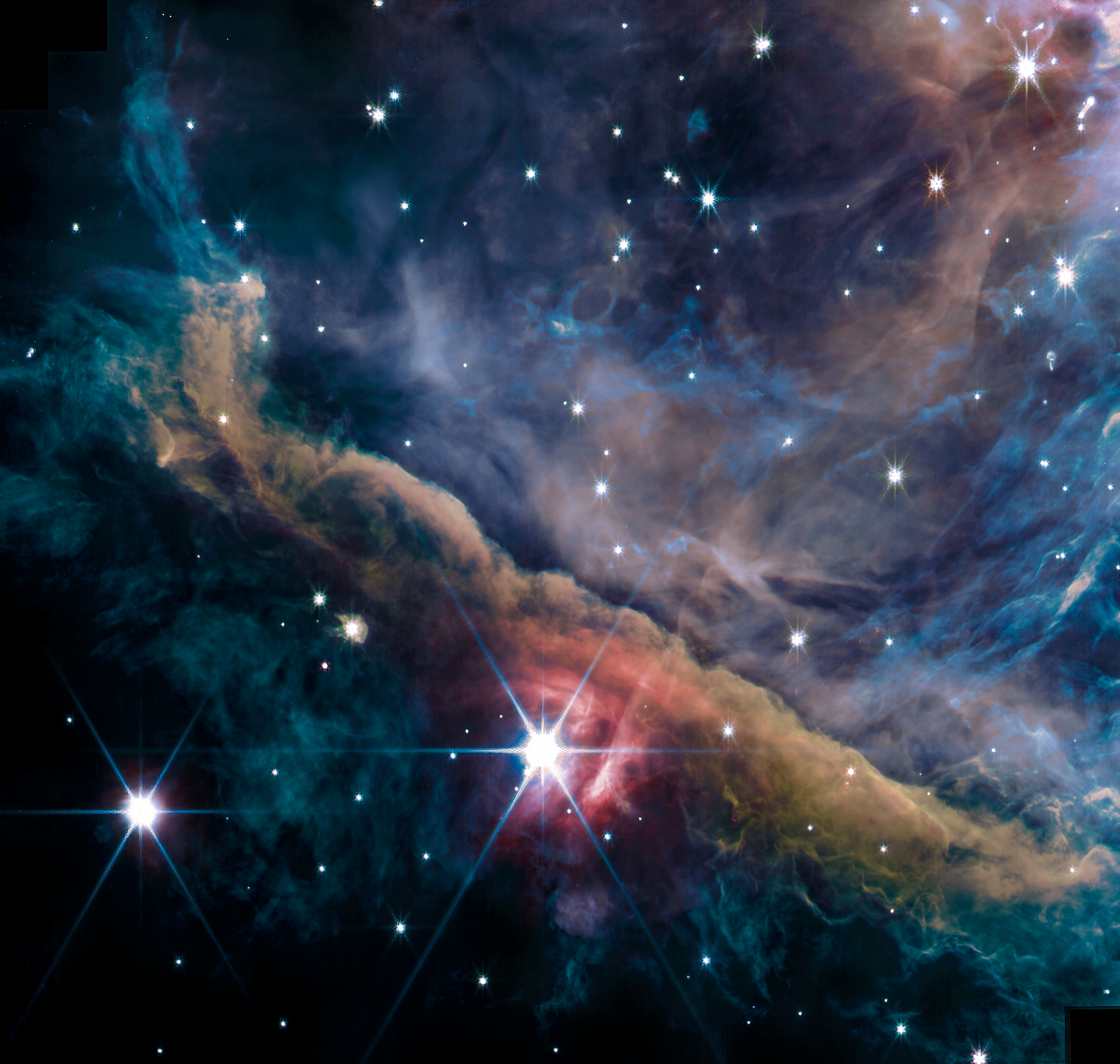New James Webb Space Telescope Images Reveal Spectacular View Of The Orion Nebula

The James Webb Space Telescope (Webb) has captured the most detailed and sharpest images ever taken of the inner region of the Orion Nebula, a stellar nursery situated in the constellation Orion 1,350 light-years away from Earth.
The new images were targeted by the international collaboration PDRs4All and were released today.
These images have been obtained as part of the Early Release Science program PDRs4All (ID 1288) on Webb. Co-led by Western University astrophysicist Els Peeters, CNRS research scientist Olivier Berné, and Institut d’Astrophysique Spatiale (IAS) associate professor Emilie Habart, PDRs4All is an international collaboration which involves a team of more than one hundred scientists in 18 countries, including Western astrophysicists Jan Cami, Ameek Sidhu, Ryan Chown, Bethany Schefter, Sofia Pasquini and Baria Kahn.
“These new observations allow us to better understand how massive stars transform the gas and dust cloud in which they are born,” said Peeters, a Western astronomy professor and faculty member at the Institute for Earth and Space Exploration. “Massive young stars emit large quantities of ultraviolet radiation directly into the native cloud that still surrounds them, and this changes the physical shape of the cloud as well as its chemical makeup. How precisely this works, and how it affects further star and planet formation is not yet well known.”
The new images released today reveal numerous spectacular structures inside the nebula, down to scales comparable to the size of the Solar System.
“We clearly see several dense filaments. These filamentary structures may promote a new generation of stars in the deeper regions of the cloud of dust and gas. Stellar systems already in formation show up as well,” said Berné. Inside its cocoon, young stars with a disk of dust and gas in which planets form are observed in the nebula. Small cavities dug by new stars being blown by the intense radiation and stellar winds of newborn stars are also clearly visible.
“We have never been able to see the intricate fine details of how interstellar matter is structured in these environments, and to figure out how planetary systems can form in the presence of this harsh radiation. These images reveal the heritage of the interstellar medium in planetary systems,” said Habart.
Analogue evolution
Long considered an environment similar to the cradle of the Solar System (when it formed more than 4.5 billion years ago), scientists today are interested in observing the Orion Nebula to understand, by analogy, what happened during the first million years of our planetary evolution.
“We are blown away by the breathtaking images of the Orion Nebula. We started this project in 2017, so we have been waiting more than five years to get these observations,” said Peeters.
The hearts of stellar nurseries like the Orion Nebula are obscured by large amounts of stardust making it impossible to study what is happening inside them in visible light with telescopes like the Hubble Space Telescope. Webb detects the infrared light of the cosmos, which allows observers to see through these layers of dust while revealing the action happening deeply inside the Nebula.
“Observing the Orion Nebula was a challenge because it is very bright for Webb’s unprecedented sensitive instruments. But Webb is incredible, Webb can observe distant and faint galaxies, as well as Jupiter and Orion, which are some of the brightest sources in the infrared sky,” said Berné.
At the heart of the Orion Nebula is the ‘trapezium cluster’ of young massive stars whose intense ultraviolet radiation shapes the cloud of dust and gas. Understanding how this intense radiation impacts their surroundings is a key question in understanding the formation of stellar systems like our own Solar System.
“Seeing these first images of the Orion Nebula only marks the beginning of our excitement. The PDRs4All team is working hard to analyze the Orion data and we expect new discoveries about these early phases of the formation of stellar systems,” said Habart. “We are excited to be part of Webb’s journey of discoveries.”
Webb is the most powerful space telescope in human history. Developed in partnership by NASA, the European Space Agency, and the Canadian Space Agency (CSA), Webb boasts an iconic 6.5-metre-wide mirror, consisting of a honeycomb-like pattern of 18 hexagonal, gold-coated mirror segments and a five-layer, diamond-shaped sunshield the size of a tennis court. As a partner, CSA receives a guaranteed share of Webb’s observation time, making Canadian scientists some of the first to study data collected by the most advanced space telescope ever built.
More images https://news.westernu.ca/2022/09/jwst-pdrs4all-orion-nebula/
MEDIA CONTACT: Jeff Renaud, Senior Media Relations Officer, 519-520-7281 (mobile), jrenaud9@uwo.ca
ABOUT WESTERN
Western University delivers an academic experience second to none. Since 1878, The Western Experience has combined academic excellence with life-long opportunities for intellectual, social and cultural growth in order to better serve our communities. Our research excellence expands knowledge and drives discovery with real-world application. Western attracts individuals with a broad worldview, seeking to study, influence and lead in the international community.








